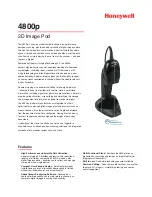
15 5.2 Stripcharts
a graph from a paper stripchart recorder. The maximum and minimum graphs
are unique, however. Each gives the worst case value for every Interval, with
single-cycle measurement resolution.
Each Scanner has at least enough memory to record Stripcharts for a week
with a one minute Interval. When the Stripchart data fills the Stripchart mem-
ory, the Scanner has two options: it can either stop recording Stripcharts, or go
into “wrap-around” mode. In “wrap-around” mode, the oldest Stripchart data
points are erased to make room for the new ones as they are collected, which
allows the Scanner to always have the latest data. This choice is made by the
user during the Initialization. If the “Enable Stripchart Wraparound” box is
checked, the Scanner will go into “wrap-around” mode as needed, otherwise it
will stop Stripchart recording when memory is full. This does not affect other
record types. For example, if there is memory for one week of Stripcharts, and
the Scanner was left in the field for three weeks, it would either have the first
or the last week’s Stripchart data, depending on the wrap-around setting.
Every Scanner can record a Stripchart of voltage. Some Scanners can also
record a Stripchart of current. With the power option, the 2SX-Series Scanner
can also record Stripcharts for real, reactive, and apparent power, and power
factor. With the harmonics option, the 2SX-Series Scanner can record stripcharts
of harmonic magnitudes. Typically, only a few stripcharts are needed at one
time. All the Stripcharts share the same memory, so enabling more Stripcharts
reduces the total Stripchart recording time.
When creating a Stripchart graph or report, any “gaps” in the data due
to a power outage are filled with zeroes. This happens when the Scanner loses
power, and its rechargeable battery (if present) runs down.
5.2.2 Typical Settings and Suggested Uses
There are three settings for the Stripchart record types. The primary setting is
the Stripchart Interval. This time setting determines how often the Stripchart
data is recorded. Since the Stripcharts always give worst case one-cycle max
and min values, the Interval can be set to any time value without a loss of
measurement resolution. For example, even if the Interval is set to 15 minutes,
the maximum and minimum one-cycle RMS values for each 15 minute period
are recorded. What is lost by setting the Interval to larger values is time
information. If there is a voltage minimum of 90 volts RMS during a Stripchart
interval, with the Interval set to 15 minutes, you are sure that voltage dipped
that low for at least a cycle, but you don’t know when or how often or how
long during that 15 minutes it happened. A smaller Interval, such as one
minute, provides a finer time resolution. The smallest Interval, one second,
gives excellent time resolution, but consumes memory 60 times faster than a
















































